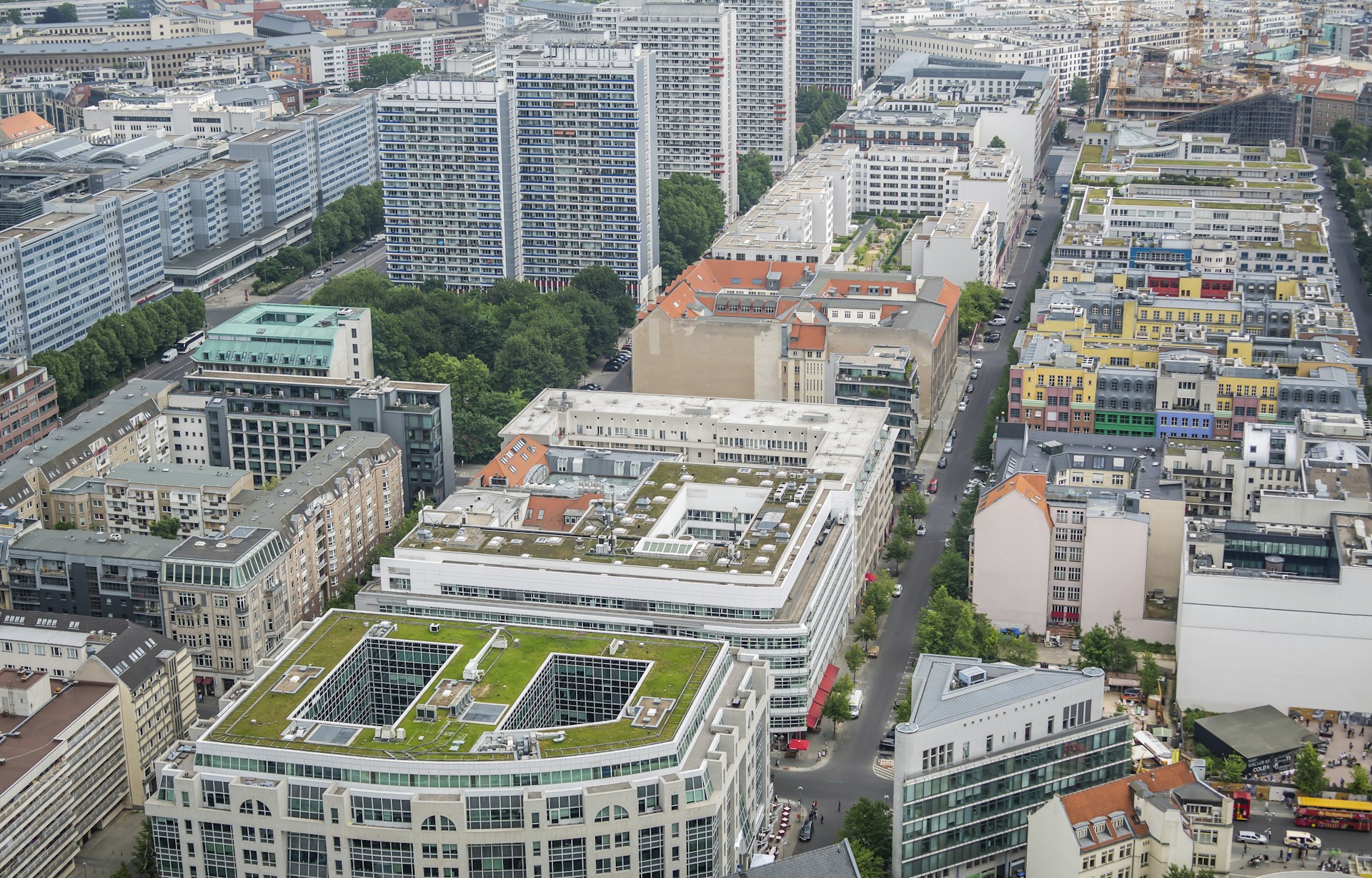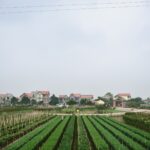Unlocking Real Estate Opportunities in America's Leading Green Cities


Photo by Markus Spiske on Unsplash
Introduction: The New Frontier of Green City Real Estate
Urban centers across the United States are rapidly transforming into sustainable, eco-friendly communities, creating unique real estate opportunities for investors, homebuyers, and developers. These green cities are driven by strong job markets, innovative technology hubs, and robust environmental initiatives. This evolution unlocks new pathways for those seeking not only financial returns but also a stake in future-ready urban living. Understanding where these opportunities exist and how to access them is crucial for anyone looking to capitalize on the next wave of real estate growth.
Why Green Cities Matter for Real Estate Investment
Green cities are characterized by their commitment to sustainability, energy efficiency, and community wellness. They prioritize eco-friendly infrastructure, access to public transit, green spaces, and policies supporting clean energy. These features make them attractive to both residents and businesses, which in turn drives demand for housing and commercial space. As more companies and workers prioritize sustainability, green cities often see faster population growth, stable housing markets, and rising property values – all fundamental drivers for real estate success [1] .
Top U.S. Green Cities for Real Estate Opportunities
Several American cities are emerging as leaders in sustainable development and real estate investment potential. Key examples include:
- Austin, Texas: Known for its tech sector and eco-initiatives, Austin offers property tax cuts for new builds and is home to numerous green-certified developments. Its job growth and talent influx fuel high demand for both residential and commercial properties [2] .
- Charlotte, North Carolina: With extensive green infrastructure projects and a growing finance sector, Charlotte provides tax breaks for business properties and is a hub for affordable, energy-efficient housing [3] .
- Denver, Colorado: Denver incentivizes eco-friendly renovations and new green construction, offering perks for sustainable property upgrades. The city is recognized for its commitment to renewable energy and healthy living [2] .
- Phoenix, Arizona: Affordable living and lower property taxes make Phoenix attractive. The city is investing in water-efficient landscaping, solar power, and public transit, drawing in both residents and forward-thinking investors [3] .
- Portland, Oregon & San Francisco, California: Both cities are known for their ambitious environmental policies and thriving green real estate markets, focusing on mixed-use developments and sustainable urban planning [4] .
Types of Real Estate Opportunities Available
Opportunities within green cities span several asset classes:
1. Residential Properties: Modern eco-friendly homes, apartments, and mixed-use developments are increasingly popular. Buyers and renters seek energy-efficient appliances, smart home technologies, and proximity to green spaces. Developers who incorporate sustainable features often command premium rents and higher resale values.
2. Commercial and Mixed-Use Buildings: Office spaces and retail centers designed with green construction standards (such as LEED certification) attract environmentally conscious businesses and consumers. These properties typically benefit from lower operating costs and increased tenant retention.
3. Value-Add and Redevelopment Projects: Investors may find strong returns in upgrading outdated properties to meet new environmental codes or in participating in urban infill projects that prioritize walkability and reduced carbon footprints [4] .
Tax Incentives and Financial Benefits in Green Cities
Many green cities offer tax breaks and incentives to encourage sustainable real estate development. For instance:
- Property Tax Reductions: Cities like Austin and Phoenix provide lower property taxes or tax cuts for the construction of energy-efficient buildings or for investing in green infrastructure [2] .
- Tax Credits for Affordable and Green Housing: Nashville and Charlotte offer credits for building or renovating homes that meet affordable housing and environmental standards.
- Grants and Rebates: Some municipalities partner with utility companies or state programs to offer grants and rebates for solar installation, green roofs, and high-efficiency upgrades. The local city government or state energy department typically provides details on eligibility and application processes. To access these incentives, visit your city’s official website or search for your state’s “energy efficiency programs.”
How to Access Green City Real Estate Opportunities: Step-by-Step Guidance
1. Identify Target Markets: Begin by researching cities with strong sustainability policies and robust economic growth. Use keywords like “green city real estate investment” or “sustainable property markets” on reputable real estate platforms, such as Zillow, Realtor.com, or by consulting local government planning departments.
2. Analyze Local Incentives: Review city and state government websites for up-to-date information on tax incentives, grants, and zoning policies. Contact your local city hall, planning department, or state energy office for direct assistance. Example search terms: “[City Name] green building incentives,” “[State] energy efficiency rebates.”
3. Connect with Specialized Investment Firms: Companies like The Green Cities Company specialize in sustainable real estate and offer in-house expertise on sourcing, acquiring, and managing green assets. You can reach out to such firms directly through their verified contact information for more details on investment strategies or partnership opportunities [4] .
4. Evaluate Financing Options: Many banks and credit unions now offer favorable loan terms for energy-efficient projects. Ask your lender about green mortgages or financing programs that reward sustainable construction.
5. Stay Informed on Regulatory Changes: Green building codes and environmental policies evolve quickly. Regularly monitor your local government’s planning and building departments for updates, or subscribe to newsletters from real estate industry groups focused on sustainability.
Real-World Examples and Case Studies
Consider the following real-world examples to illustrate how investors and developers are succeeding in green cities:
Austin, Texas: A developer partnered with the city to build a LEED Platinum-certified apartment complex, benefiting from property tax cuts while attracting tenants seeking sustainable living. The project achieved high occupancy and above-market rents within months of completion [2] .
Charlotte, North Carolina: An investor transformed an outdated commercial building into an energy-efficient coworking space, leveraging tax incentives and local grants. The revitalized property became a hub for tech startups, demonstrating how green upgrades can create new demand and community value [3] .
Denver, Colorado: Homeowners and small multifamily landlords accessed rebates and local grants to retrofit properties with solar panels and high-efficiency HVAC systems, resulting in lower operating costs and improved tenant satisfaction [2] .
Challenges and Solutions When Investing in Green Cities
While green cities offer many advantages, investors may encounter specific challenges:

Photo by Marek Lumi on Unsplash
High Upfront Costs: Sustainable materials and technologies can increase construction or renovation expenses. Solution: Seek local grants, rebates, and financing programs tailored to green projects. Work with experienced contractors who know how to optimize costs without sacrificing quality.
Navigating Regulatory Complexity: Green building codes and incentive programs can be complex and vary widely by location. Solution: Consult with local real estate attorneys, architects, or planning departments to ensure compliance and maximize benefits.
Market Competition: As green cities gain popularity, competition for prime sites and properties intensifies. Solution: Explore emerging neighborhoods, value-add opportunities, or partner with specialized investment firms to gain early access to deals.
Alternative Approaches for Entering Green City Markets
If direct investment or development isn’t feasible, consider these alternatives:
Real Estate Investment Trusts (REITs): Some REITs focus specifically on sustainable or green-certified properties, allowing investors to gain exposure to these markets without direct ownership. Research sustainable REITs through financial news outlets or by speaking with your financial advisor.
Crowdfunding Platforms: Real estate crowdfunding sites occasionally offer projects in green cities or for sustainable developments. Always verify platform credibility and project details before investing.
Partnerships with Local Developers: Joint ventures with experienced developers can provide access to expertise and local market knowledge, especially for larger or more complex projects.
Key Takeaways and Next Steps
Real estate opportunities in green cities are growing due to demographic trends, technological innovation, and environmental priorities. By focusing on sustainable markets, leveraging incentives, and partnering with specialized firms or local experts, you can access attractive investment prospects while contributing to healthier, more resilient urban environments.
To get started, research your target city’s government and planning websites for green building policies, contact local investment firms with expertise in sustainability, and consult with financial advisors familiar with eco-friendly real estate. For more insights, follow current real estate market reports and sustainability news from reputable industry sources.
References
- [1] United States Real Estate Investor (2025). Which U.S. Cities Are Emerging as Real Estate Investment Hotspots for 2025?
- [2] Rentastic (2025). U.S. Cities Offering the Best Incentives for Investors in 2025.
- [3] The Business Achiever (2025). The Best Cities for Real Estate Investment in 2025.
- [4] The Green Cities Company (2025). About Our Firm & Sustainable Real Estate Investment.






